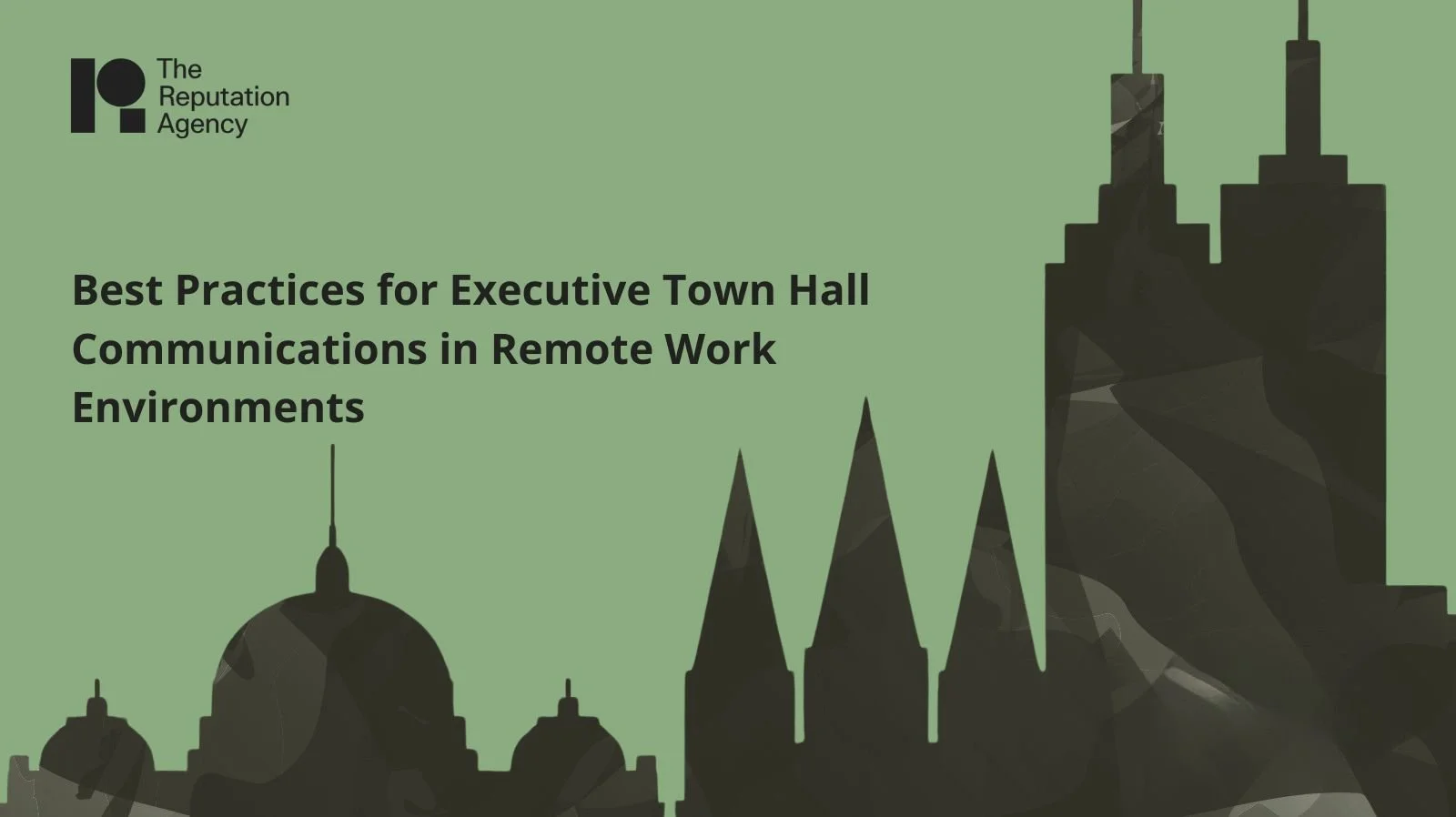Why Executive Town Halls Are Critical in Remote Work Environments
Executive town halls are a key tool for engaging employees, sharing organisational updates, and reinforcing company culture. In remote work environments, where teams may feel disconnected, effective town hall communications are even more important. Well-executed virtual town halls foster transparency, alignment, and trust, helping employees stay informed and motivated.
Challenges of Virtual Executive Town Halls
Maintaining Engagement Across Distributed Teams
Remote teams face challenges in staying engaged during virtual meetings due to distractions, time zone differences, and the lack of in-person interaction. Leaders must adapt their approach to ensure participation and focus.
Ensuring Clarity and Transparency
Without face-to-face interaction, messaging can be misinterpreted or lost. Executives need to communicate clearly, reinforce key points, and provide opportunities for questions to maintain trust and credibility.
Best Practices for Effective Executive Town Halls
1. Plan and Structure the Agenda
A clear agenda helps maximise engagement and ensures that key topics are covered:
Start with organisational updates and strategic priorities
Recognise achievements and milestones
Address employee questions or concerns
A structured approach keeps the session focused and meaningful.
2. Use Interactive Features
Interactive tools in virtual meeting platforms help keep employees engaged:
Polls and surveys to gather instant feedback
Q&A sessions for real-time interaction
Chat functions for comments and discussion
Encouraging participation fosters a sense of inclusion and connection among remote teams.
3. Communicate Key Messages Clearly
Executives should emphasise clear, concise, and consistent messaging:
Highlight organisational priorities and updates
Use simple, understandable language
Reinforce key takeaways throughout the session
Clarity ensures that employees leave with a solid understanding of company objectives.
4. Leverage Multimedia and Visuals
Visual aids make virtual town halls more engaging and memorable:
Slides summarising key data or achievements
Videos or graphics to illustrate initiatives
Live demonstrations or walkthroughs when appropriate
Visuals complement verbal messaging and help maintain attention.
5. Schedule Thoughtfully
Timing is crucial for remote teams, especially across time zones:
Rotate session times to accommodate different regions
Record the session for employees who cannot attend live
Share key highlights or summaries post-event
Thoughtful scheduling ensures maximum participation and inclusivity.
6. Follow Up and Reinforce Messages
After the town hall, provide follow-up materials to reinforce key points:
Summaries, recordings, or slides shared via email or intranet
Action items or next steps for teams
Opportunities for additional questions or feedback
Follow-up ensures continuity and keeps employees aligned with organisational priorities.
Did You Know?
Research shows that remote employees who attend interactive virtual town halls are 25% more likely to feel informed, connected, and engaged with their organisation.
Enhancing Employee Engagement Through Virtual Town Halls
Effective executive town halls in remote environments build trust, reinforce culture, and foster alignment across distributed teams. By planning thoughtfully, engaging employees interactively, and following up consistently, executives can ensure town halls are impactful and strengthen organisational communication.
Need Support with Virtual Executive Communications?
The Reputation Agency helps organisations design and execute executive town halls that engage remote teams effectively. Learn more about our corporate communication services to enhance internal communication and employee engagement.
FAQs
1. Why are executive town halls important for remote teams?
They provide transparency, reinforce organisational culture, and help distributed employees stay informed and connected.
2. How can executives keep remote employees engaged during virtual town halls?
Use interactive features like polls, Q&A sessions, and chat functions, along with multimedia content and visuals.
3. What should be included in the town hall agenda?
Key organisational updates, strategic priorities, recognition of achievements, and time for employee questions or feedback.
4. How can town halls be inclusive for global teams?
Schedule sessions thoughtfully across time zones, record meetings, and provide post-event summaries or recordings.
5. How can messages be reinforced after a virtual town hall?
Share summaries, recordings, slides, action items, and provide opportunities for additional feedback to ensure key points are retained.

